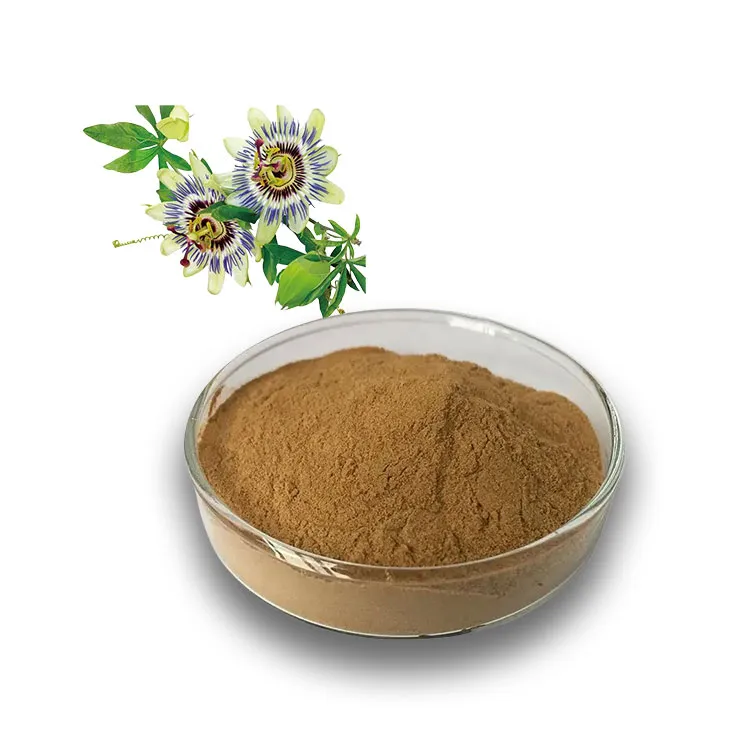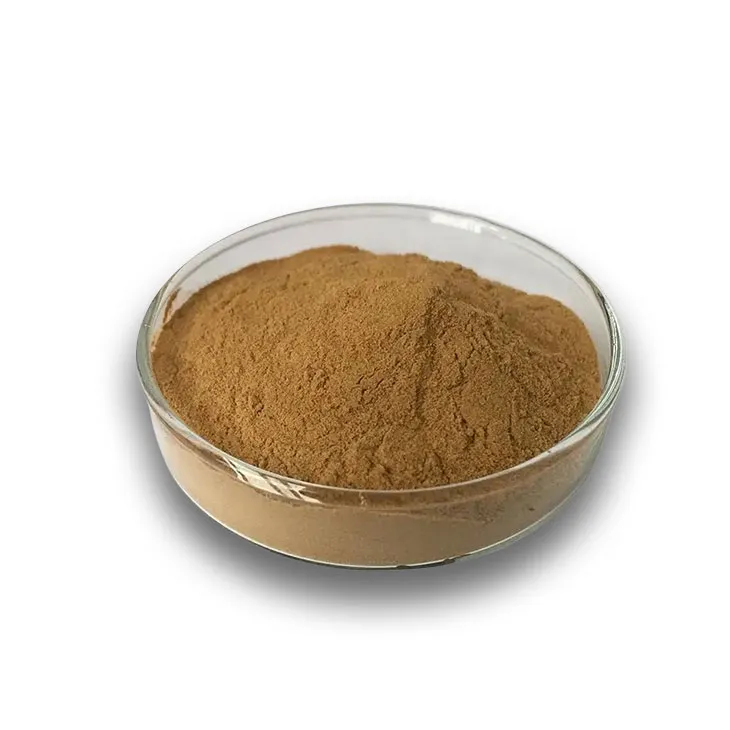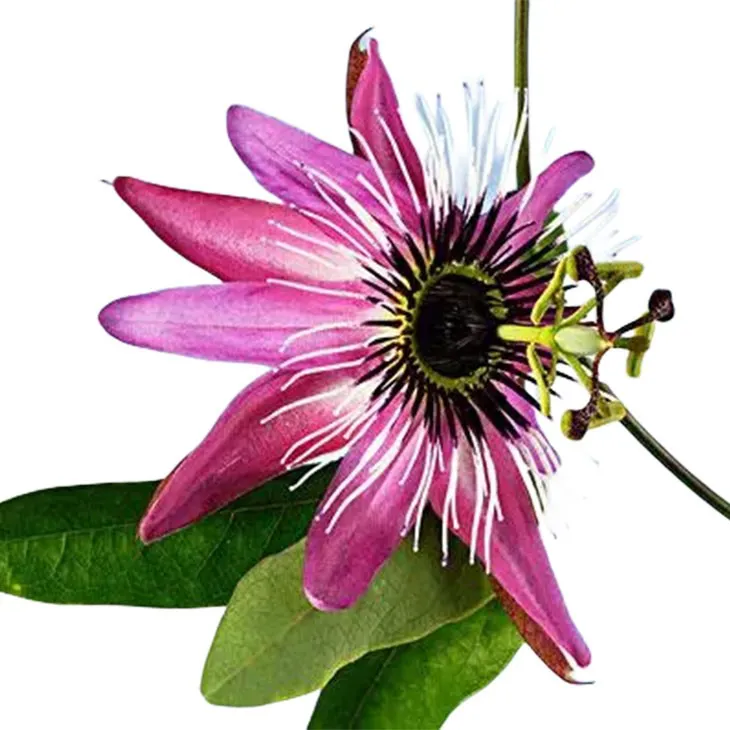- 0086-571-85302990
- sales@greenskybio.com
Passionflower Extract: Uses, Advantages and Manufacturing Processes
2024-11-14

1. Introduction
Passiflora edulis, commonly known as passionfruit, is a tropical plant that has been the source of much interest in recent years. The extract of this plant, particularly the West Indian Passionflower Extract, has a wide range of applications. This extract is obtained from different parts of the plant, such as the leaves, flowers, and fruits. It contains a complex mixture of bioactive compounds that contribute to its various properties.

2. Uses of Passionflower Extract
2.1 Cosmetic Uses
The Passionflower Extract has significant cosmetic applications. Antioxidant properties are one of the key aspects that make it valuable in this field. Antioxidants play a crucial role in protecting the skin from damage caused by free radicals. Free radicals are unstable molecules that can damage skin cells, leading to premature aging, wrinkles, and dull skin.
By using products containing passionflower extract, the skin can experience rejuvenation. This can be manifested in several ways. For example, it can help in improving the skin's elasticity, reducing the appearance of fine lines, and giving the skin a more youthful and radiant glow. Additionally, the extract may also have anti - inflammatory properties, which can be beneficial for those with sensitive or irritated skin.
2.2 Medicinal Uses
In the realm of traditional medicine, passionflower extract has a long - standing history of use. For centuries, it has been used to treat a variety of ailments.
- One of the common uses is for its sedative effects. It has been used to help people relax and relieve stress. In some cases, it has been used to treat mild forms of insomnia. The compounds in the extract are believed to interact with the nervous system in a way that promotes relaxation without causing significant drowsiness during the day.
- Passionflower extract has also been used to treat anxiety disorders. It may work by modulating the levels of certain neurotransmitters in the brain, such as gamma - aminobutyric acid (GABA). GABA is an inhibitory neurotransmitter that helps to calm the nervous system.
- Furthermore, it has been used in some traditional medicine systems to treat digestive problems. It may help in reducing stomach cramps, improving digestion, and relieving symptoms of indigestion.

3. Advantages of Passionflower Extract
3.1 Rich in Bioactive Compounds
The major advantage of passionflower extract is its rich composition of bioactive compounds. These compounds are responsible for the various beneficial effects of the extract.
- One important group of compounds is flavonoids. Flavonoids are known for their antioxidant, anti - inflammatory, and anti - microbial properties. In passionflower extract, flavonoids such as Quercetin, kaempferol, and rutin are present. These flavonoids contribute to the overall antioxidant capacity of the extract, helping to protect cells from oxidative stress.
- Another group of bioactive compounds in passionflower extract is alkaloids. Alkaloids such as harman and harmaline have been studied for their potential effects on the nervous system. They may play a role in the extract's sedative and anxiolytic properties.
- The presence of phenolic acids in the extract also adds to its beneficial properties. Phenolic acids, such as caffeic acid and chlorogenic acid, have antioxidant and anti - inflammatory effects.
3.2 Natural and Safe
Passionflower extract is a natural product, which is an advantage in many applications. Compared to synthetic chemicals, natural extracts are often perceived as being safer and more gentle on the body.
When used in cosmetics, it is less likely to cause allergic reactions or skin irritations compared to some synthetic ingredients. In the field of medicine, its natural origin makes it an attractive option for those who prefer alternative or complementary therapies. However, it is important to note that even natural products should be used with caution, and proper dosage and safety guidelines should be followed.

4. Manufacturing Processes of Passionflower Extract
4.1 Raw Material Selection
The first step in the manufacturing process of passionflower extract is the careful selection of raw materials. High - quality passionflower plants are crucial. The plants should be grown in suitable environmental conditions, free from pesticides and other contaminants.
Typically, the parts of the plant used for extraction, such as the leaves, flowers, or fruits, are harvested at the appropriate time. For example, the fruits are usually harvested when they are fully ripe for optimal bioactive compound content. The harvested plant parts are then carefully sorted to remove any damaged or diseased materials.
4.2 Extraction Methods
There are several extraction methods used to obtain passionflower extract, each with its own advantages and considerations.
- Solvent extraction is one of the commonly used methods. In this process, a suitable solvent, such as ethanol or water, is used to dissolve the bioactive compounds from the plant material. Ethanol is often preferred as it can extract a wide range of compounds effectively. The plant material is soaked in the solvent for a certain period, and then the solvent containing the dissolved compounds is separated from the solid residue. The resulting solution is then further processed to concentrate the extract.
- Supercritical fluid extraction is a more advanced method. Supercritical carbon dioxide (CO₂) is used as the extraction medium. This method has the advantage of being able to extract compounds selectively, and it leaves no solvent residues in the final extract. The supercritical CO₂ is passed through the plant material under specific temperature and pressure conditions, and the bioactive compounds are dissolved in the CO₂. The CO₂ is then depressurized, and the extract is obtained.
4.3 Purification and Concentration
After the extraction step, the passionflower extract often needs to be purified and concentrated. Purification is important to remove any impurities, such as plant debris, pigments, or unwanted compounds that may have been co - extracted.
Techniques such as filtration and chromatography can be used for purification. Filtration can remove larger particles, while chromatography can separate different compounds based on their chemical properties. Once purified, the extract is then concentrated to increase the concentration of the bioactive compounds. This can be done through evaporation of the solvent under controlled conditions.
4.4 Quality Control
Throughout the manufacturing cycle, strict quality control is essential. This ensures that the passionflower extract meets the required standards for purity, potency, and safety.
- Analysis of the raw materials is carried out to ensure that they are of high quality. This includes testing for contaminants, such as heavy metals and pesticides.
- During the extraction and processing steps, the quality of the extract is monitored. Parameters such as the concentration of bioactive compounds, pH, and solubility are measured. Any deviation from the expected values may indicate a problem in the manufacturing process, and appropriate corrective actions are taken.
- Final product testing is also performed. The finished passionflower extract is tested for its identity, purity, and potency. This may involve techniques such as high - performance liquid chromatography (HPLC) to accurately identify and quantify the bioactive compounds present in the extract.

5. Conclusion
Passionflower extract has a wide range of uses, from cosmetics to traditional medicine. Its advantages, including its rich composition of bioactive compounds and its natural origin, make it a valuable ingredient. The manufacturing processes, which involve careful raw material selection, advanced extraction methods, purification, concentration, and strict quality control, ensure that the extract is of high quality. As research continues, it is likely that more uses and benefits of passionflower extract will be discovered, further highlighting its importance in various industries.
FAQ:
Question 1: What are the main uses of Passionflower Extract in the cosmetic industry?
Passionflower Extract is used in the cosmetic industry mainly for its antioxidant properties. These antioxidant properties play a crucial role in skin rejuvenation, helping to combat signs of aging and keep the skin looking healthy.
Question 2: How long has Passionflower Extract been used in traditional medicine?
Passionflower Extract has been utilized in traditional medicine for centuries. Over this long period, it has been used to address a variety of ailments, although specific uses may vary among different traditional medical practices.
Question 3: What are the bioactive compounds in Passionflower Extract?
Passionflower Extract is rich in various bioactive compounds. These include flavonoids, alkaloids, and phenolic compounds, among others. These bioactive compounds contribute to the many properties and potential health benefits associated with the extract.
Question 4: What are the modern manufacturing techniques for Passionflower Extract?
Modern manufacturing of Passionflower Extract involves advanced extraction methods. These are designed to ensure the purity and potency of the extract. Additionally, strict quality control is implemented throughout the production cycle to maintain high - quality standards.
Question 5: What are the advantages of using Passionflower Extract in comparison to other similar extracts?
One of the main advantages of Passionflower Extract is its rich composition of bioactive compounds. These compounds give it unique properties that may not be present in other similar extracts. Additionally, its long - standing use in traditional medicine and its demonstrated antioxidant properties in cosmetics also set it apart.
Related literature
- The Chemical Composition and Biological Activities of Passiflora edulis: A Review"
- "Manufacturing Processes of Botanical Extracts: Focus on Passionflower"
- "Passionflower Extract in Cosmetics: Efficacy and Safety"
- ▶ Hesperidin
- ▶ citrus bioflavonoids
- ▶ plant extract
- ▶ lycopene
- ▶ Diosmin
- ▶ Grape seed extract
- ▶ Sea buckthorn Juice Powder
- ▶ Beetroot powder
- ▶ Hops Extract
- ▶ Artichoke Extract
- ▶ Reishi mushroom extract
- ▶ Astaxanthin
- ▶ Green Tea Extract
- ▶ Curcumin Extract
- ▶ Horse Chestnut Extract
- ▶ Other Problems
- ▶ Boswellia Serrata Extract
- ▶ Resveratrol Extract
- ▶ Marigold Extract
- ▶ Grape Leaf Extract
- ▶ blog3
- ▶ blog4
- ▶ blog5
-
Organic Tongkat Ali extract powder factory.
2024-11-14
-
How to make powder with ashwagandha extract.
2024-11-14
-
Rosehip extract manufacturers from China.
2024-11-14
-
The best cat's claw extract in nature.
2024-11-14
-
Chinese Dandelion Leaf Extract Suppliers.
2024-11-14
-
Golden Seal Extract
2024-11-14
-
Red Wine Extract
2024-11-14
-
Honeysuckle Pollen
2024-11-14
-
Dandelion Root Extract
2024-11-14
-
Polygonum Cuspidatum Extract
2024-11-14
-
Uridine-5'-monophosphate Disodium salt
2024-11-14
-
Shikonin
2024-11-14
-
Tinospora cordifolia extract
2024-11-14
-
Eyebright Extract
2024-11-14
-
Tamarind extract powder
2024-11-14





















